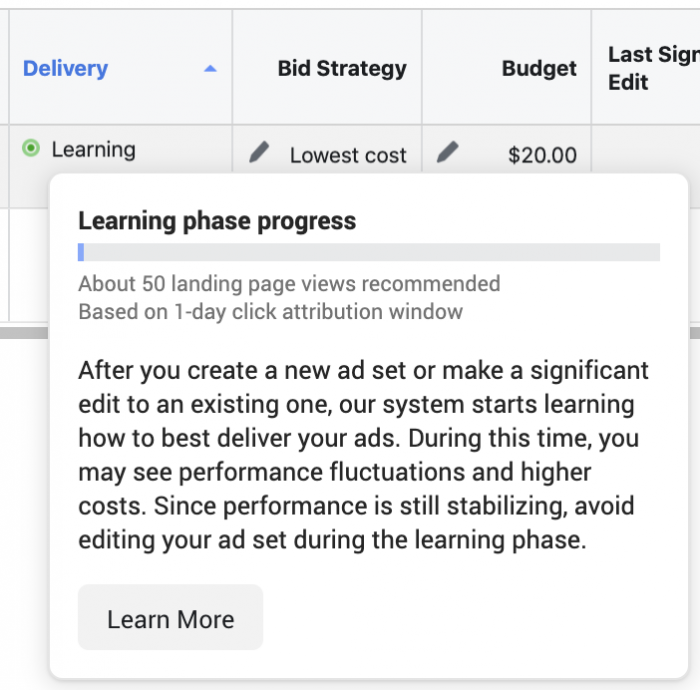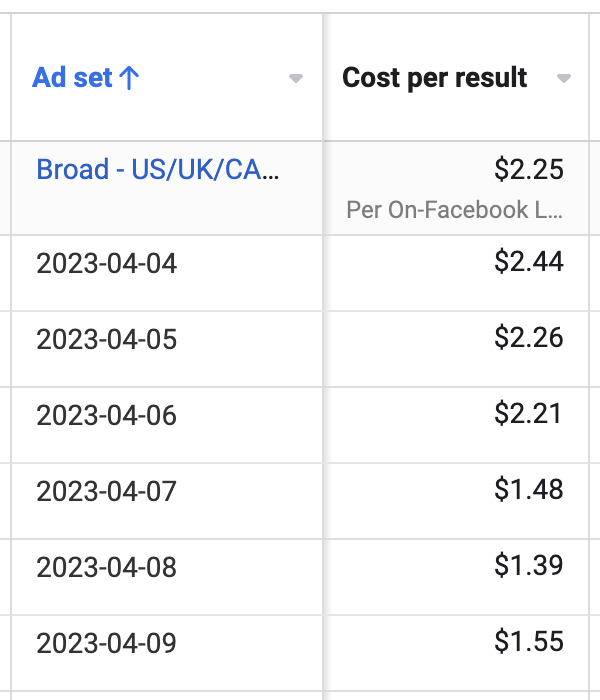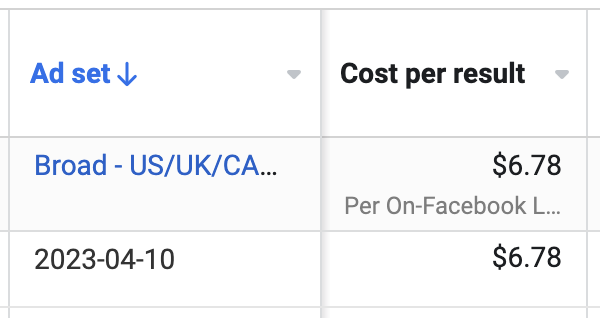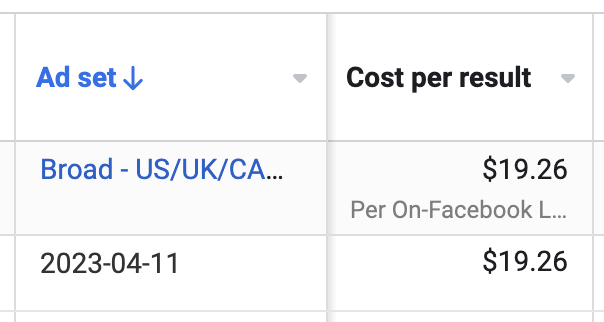If you’ve been a Facebook advertiser for a while, you’ve heard this more times than you can count. You may want to make a change. But it’s extremely risky. Do not touch a Facebook ad that’s working.
First, let’s discuss the origins of this advice. Then, allow me to share my own story of how I took the risk and lost. Finally, we’ll discuss the problem at hand and what you should do.
Why Not?
The algorithm is touchy. If the planets align to give you great results, don’t do anything to disrupt that.
Virtually every advertiser has their own story. They made a minor change. Thought nothing of it. And those great results disappeared.
This isn’t just a theory, this is an actual thing to be concerned about. Of course, the root causes aren’t clear, so we’re never entirely certain about how, when, or why this happens.
One very likely connection is the Learning Phase. This is the period of time after an ad set is launched or a significant change is made that the algorithm learns. This is when your results are the least stable.

This is the most likely cause in the vast majority of these situations. You had achieved stable, optimal results. You then made an edit that restarted the Learning Phase, and suddenly that stability was lost.
My Sad Story
It really doesn’t matter how long you’ve been advertising. No matter how many times you’ve been burned by this, you’ll do it again.
It’s not that we like danger. It’s that there are often so many good reasons to make changes that we just can’t help ourselves.
My example is a lead ads campaign. It performed pretty well, and it was doing everything you’d want a lead ads campaign to do. The results were improving nearly every day.

Everything was going great. It seemed as though the Cost Per Lead could conceivably get better.
But there was one problem, and it had virtually nothing to do with the campaign itself. I was testing an application to sync leads to my CRM. Due to some beginner ignorance, I missed a step somewhere and most of these leads were labeled as “unmarketable.”
That, of course, is a bad thing. If I can’t even email these leads with the thing they requested, they aren’t really leads at all.
So, while I sorted out this issue, I switched to Zapier, the software I normally use for CRM syncing. But, I didn’t like the idea of syncing to the same lead form. I wanted a clean break from what wasn’t working properly to what was.
So, I duplicated the lead form and renamed it. Didn’t change anything to the campaign, ad set, or ad otherwise. The form would look the same.
And then, this happened…

Okay, that’s bad. My Cost Per Lead multiplied by four, but even that is misleading. This switch happened mid-day, so the leads were virtually drying up.
I then compounded the problem. Okay. Leads stopped coming in. Let’s just switch it back to the old form and pretend that this never happened. The algorithm will be able to go back to where it was, right?
Yeah, no…

So, just days earlier, the Cost Per Lead was dipping under $1.50 and seemed to be on the way to going even lower. Now, I have to spend about $20 to get even one lead.
Needless to say, these were disastrous decisions on my part. While I had hoped this “minor” edit wouldn’t restart the Learning Phase or negatively impact my results, it was a gamble.
I lost that gamble in a big way.
The Problem
The issue here is that my situation is common. There are so many reasons that an advertiser might want to make a very minor edit. But doing so is such a significant risk.
And while I totally understand why major edits can tank your results, it makes no sense why this one would. Sure, the algorithm is stupid and doesn’t realize that the form looks exactly like the old one. In theory, it could be a completely different form.
But it wasn’t. And this AI stuff is supposed to be so much smarter now. Why not continue optimizing the ads as it was? If the results tank from staying on that same track, obviously my change was significant and the systems should need to re-learn. But there was no reason for the algorithm to re-learn here.
This could have just as easily been a minor text edit. You fix a typo. But that fix could change everything, and not in a good way.
There has to be a way to make this system more stable. Or make it smarter at detecting significant and insignificant edits.
Meta could also stand to provide some clarity regarding significant edits that will result in re-entering the Learning Phase. This is Meta’s horrendous explanation of when budgetary changes restart the Learning Phase…

If you increase your budget from $100 to $101 (something that will never happen), you’re fine. But if you increase it 10-fold, expect learning to restart. Yeah, no kidding.
Let’s consider the very reasonable situation when this is going to come into play. An advertiser tests out a campaign with a $50 per day budget. Amazing results. Of course, you will want to scale.
You’re in luck! Increase to $51, and you should be fine. Yeah, that’s not helpful.
What could you safely increase your budget to without worry? We don’t know. We only have theories.
Some advertisers have suggested a slow 15% to 25% increase, but it’s obvious that this isn’t set in stone. We have no idea what increase is safe, and it sure would be helpful if Meta provided that clarity.
What Should You Do?
Obviously, I’m a bad teacher here because I’ve been doing this for over a decade and I’m still getting burned. But, here are some thoughts…
1. Plan for great results.
What I mean by this is that it’s better to start with a budget that is too high than too low. If you aren’t getting great results at $100 per day, come down to $50 per day. If that restarts the Learning Phase, so what? Your results weren’t great anyway.
2. Be okay with low-budget results.
If you roll with a $20 daily budget, though, understand that you may be stuck there. Be okay with that. Because it’s better to get great results at $20 per day than crappy results when you attempt to increase that budget to $50.
3. Review before publishing.
Make certain that everything is set up the way you want it. The right copy, creative, targeting, and optimization. You do not want to change anything a few days from now. Get it sorted out before it’s approved.
4. Don’t touch it.
Don’t change the ad. Don’t change the form (ugh). Don’t throw another ad set or ad into the mix. No edits.
Unless…
5. Make changes when they’re needed.
Look, if something isn’t working great, who cares? Make whatever edits or additions you want. If the results get worse, you didn’t lose anything because you were on the verge of stopping this campaign anyway.
Your changes and edits should be last-ditch efforts to save a campaign. Otherwise, start over with a new one.
Watch My Video
I recorded a video about this, too. Check it out below…
Your Turn
Have you been burned by this? What do you think?
Let me know in the comments below!







